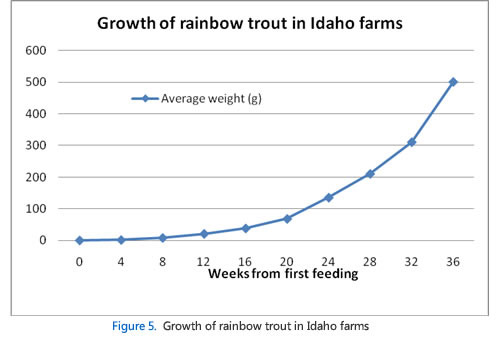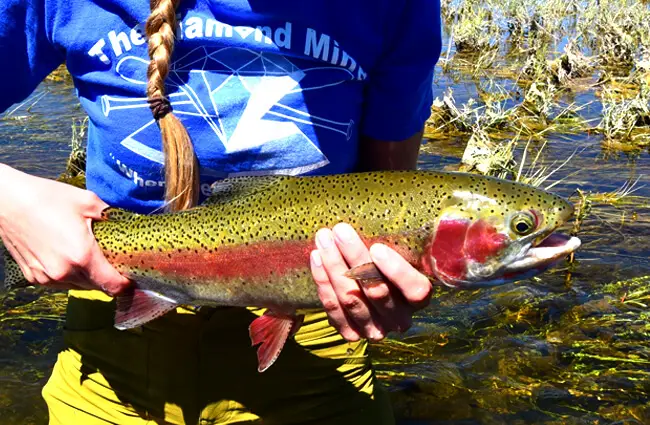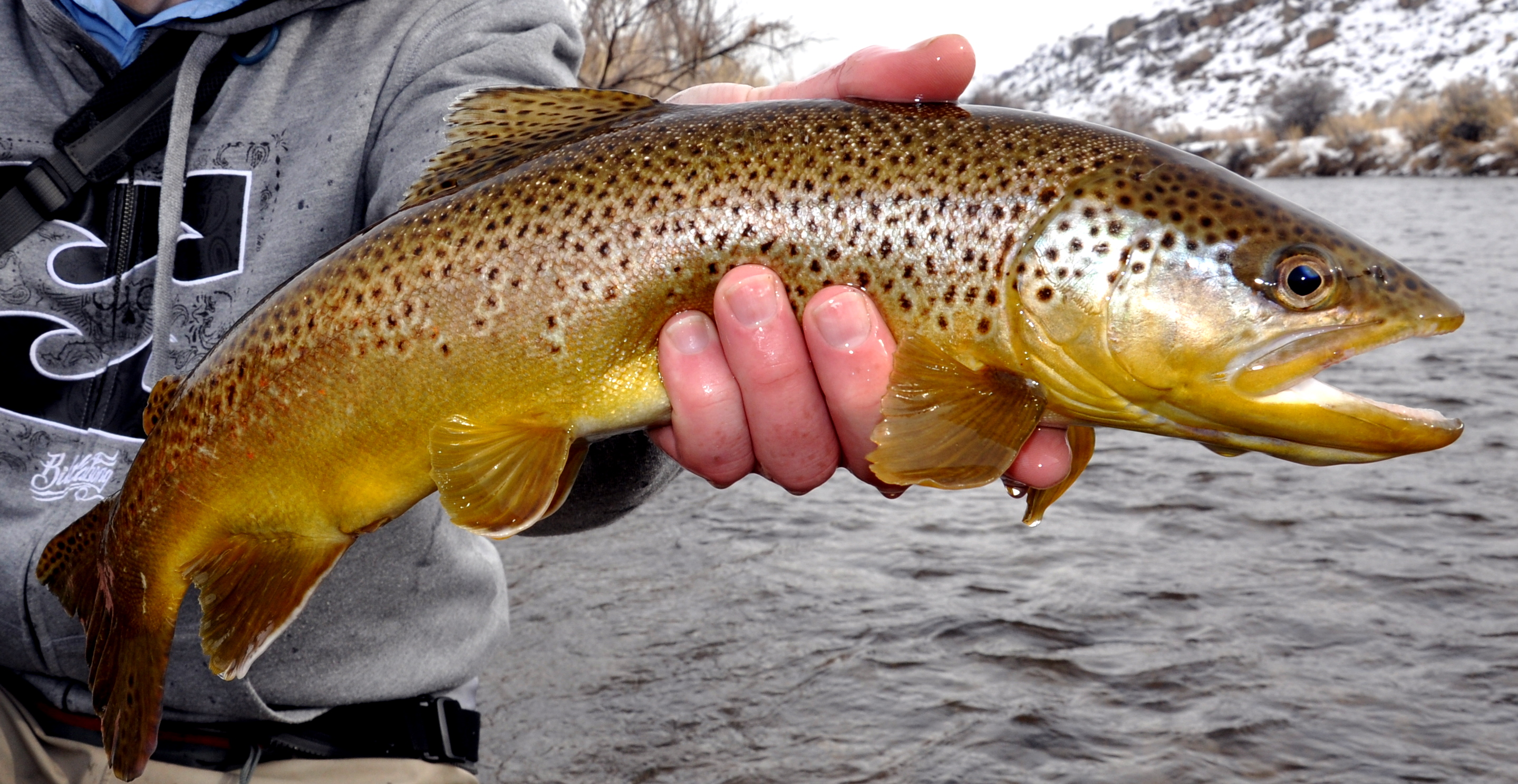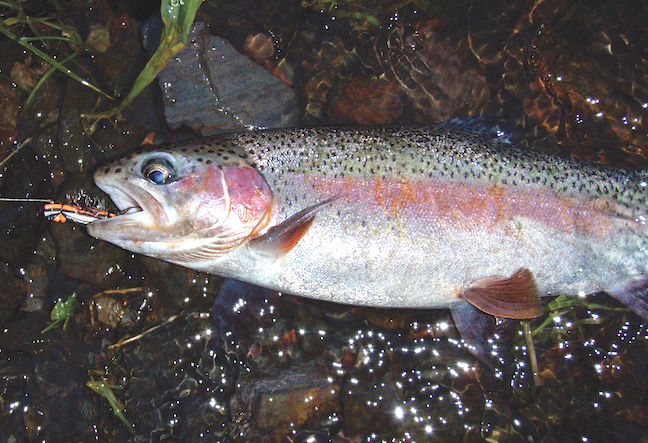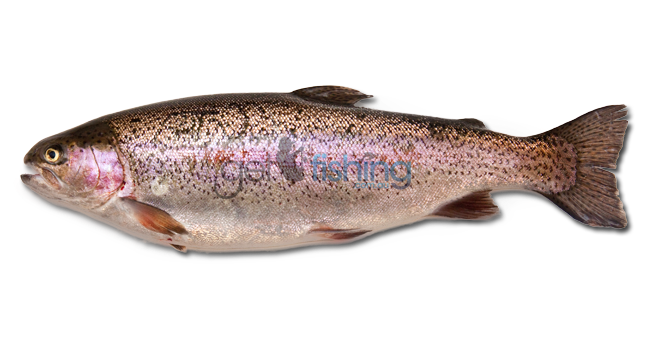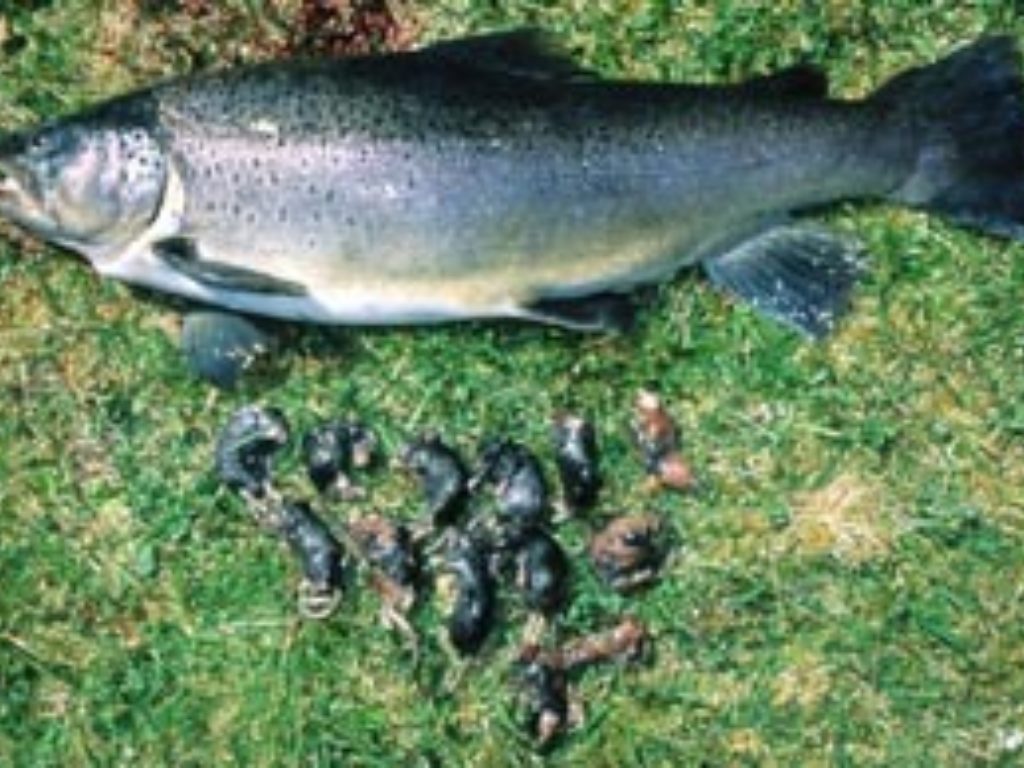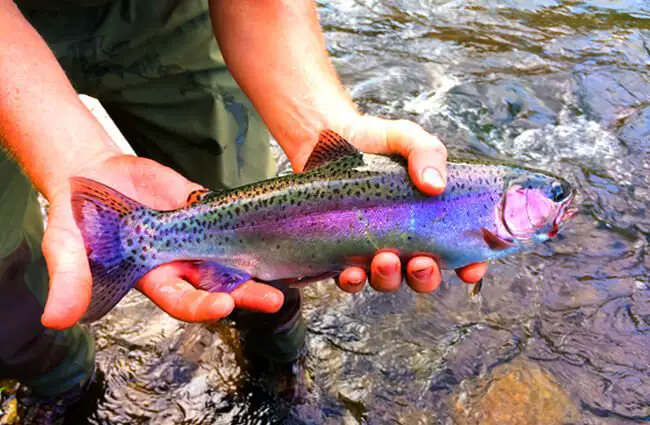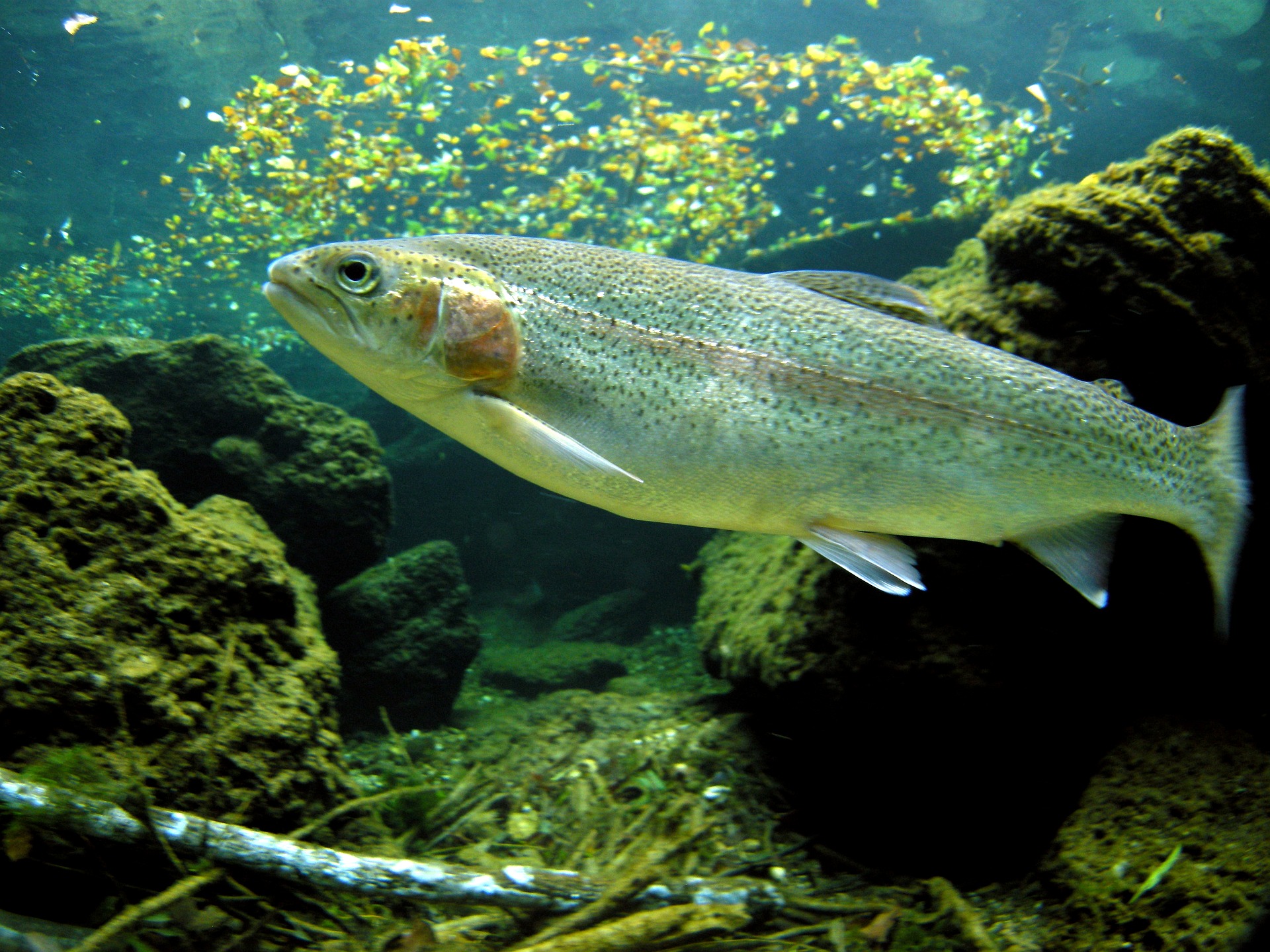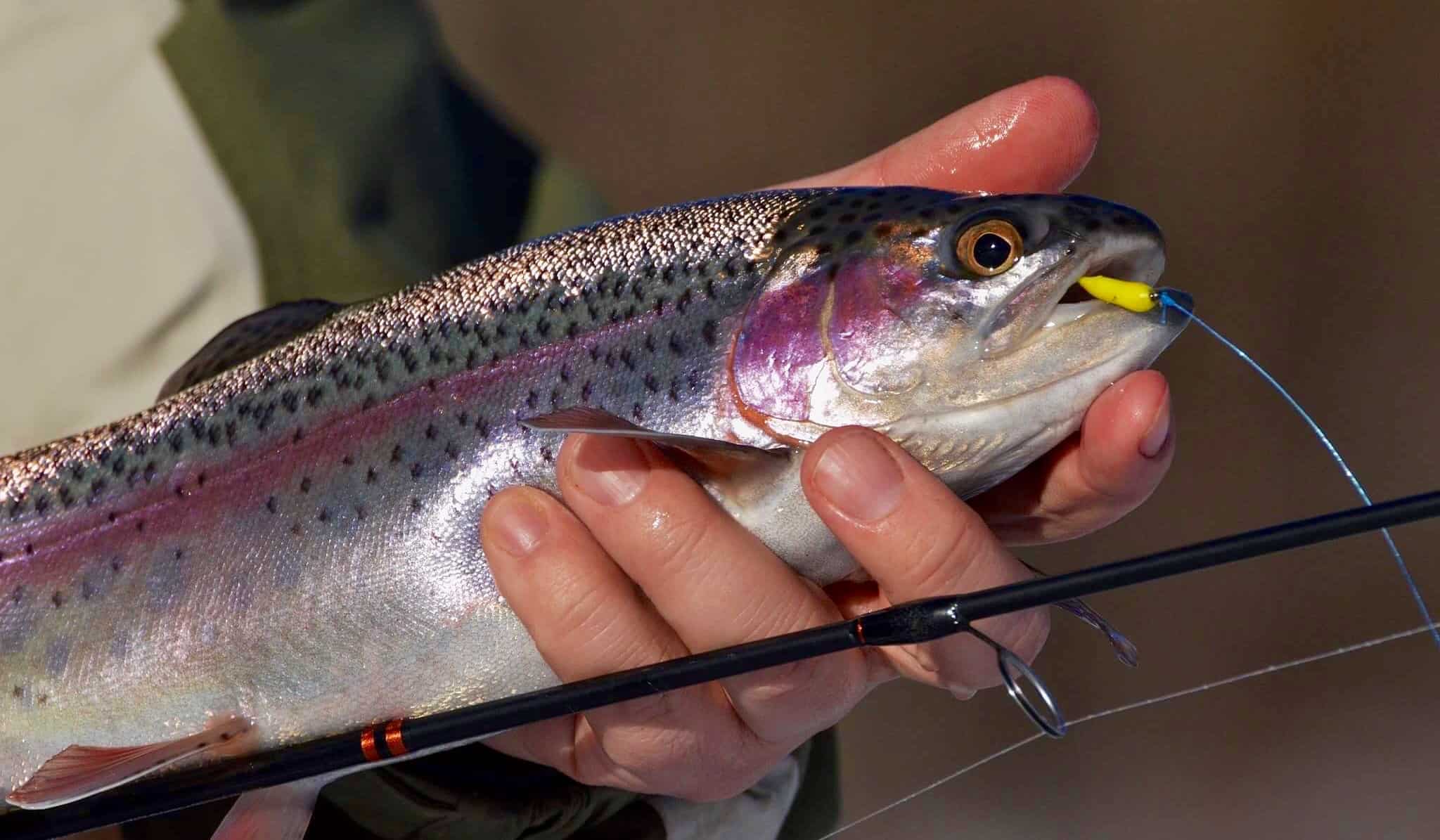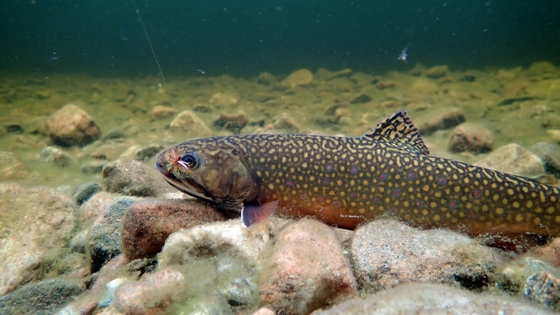Rainbow Trout Eating Habits

Rainbow trout are predators that will eat anything in the water including small fishes insects and fish eggs.
Rainbow trout eating habits. Its then that they turn to more of a diet of fish salmon carcasses eggs and even small mammals. These are not fussy eaters. Insects remain their dominant food source throughout life although they are opportunistic piscivores.
Its feeding habits are characterized with rooting and pleading for more food and eating food with a great gusto and relish. As a supplement to a natural diet of smaller fish and invertebrates salmonid pellets are fine. When you lift it up every once in a while and let it fall back down he says it adds a bit of motion stirs up a cloud of silt and calls the trout over.
Trout feeding throughout May for example will have already gorged themselves on Chironomid hatches. Rainbows then stay in a similar habitat for the first 2 or 3 years before moving into the larger water of lakes and streams. Fill a bucket with fish pellets in the early morning.
2017-04-03 All trout are carnivores and large trout will eat small fish where they are available. The trout then go into a non-feeding cycle to digest their food. They also eat smaller fish crayfish shrimp and fish eggs like salmon eggs brown trout eggs cutthroat trout eggs and more.
Rainbow Trout can not be called a Rainbow Trout unless it loves its food. Bass will eat pellets developed for salmon and trout species although this might not be ideal as their only source of food. They will basically eat almost anything they can find.
But the most common food source of the fish is insects like worms dragonflies damselflies mayflies and caddies flies. Trout begin spawning at the age of 3 or 4. And 15C and do so most enthusiastically when it.


